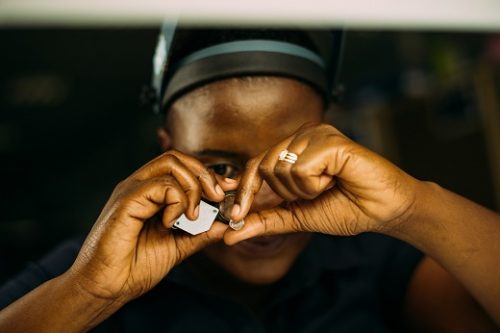
Lucara keeps raking in the big diamond finds, this time recovering a 62.7-carat fancy pink diamond from its Karowe mine in Botswana.
It is the largest fancy pink gem to found in Botswana, according to the diamond miner, and one of the largest rough pink diamonds on record in the world.
The stone has been named “Boitumelo,” which means joys in Setswana.
Measuring 26 x 17 x 16 mm, it is described as a high-quality fancy pink Type IIa gem.
Lucara uncovered it from the direct ore milling at the EM/PK(S) unit of the South Lobe, the site of many of its biggest finds.
The company said a 22.21-carat fancy pink gem of similar quality was found during the same production period, as were two more pink gems of similar color weighing 11.17 carats and 5.05 carats.

Asked if those additional small pink diamonds could’ve broken off from the same piece as the 62.7-carat diamond, a company spokesperson said: “As the diamonds all came from a similar production period it may be possible, but we cannot confirm this at this time. Further detailed analysis needs to be carried out to confirm if they did indeed originally stem from one diamond.”
Regarding the find, CEO Eira Thomas said, “Lucara is delighted to announce another historic diamond with the recovery of the Boitumelo, and very pleased to demonstrate the continued potential for large, colored diamonds from the South Lobe production.
“These remarkable pink diamonds join a collection of significant diamond recoveries in 2021 produced from the EM/PK(S), which forms a key economic driver for the proposed underground mine at Karowe.”









